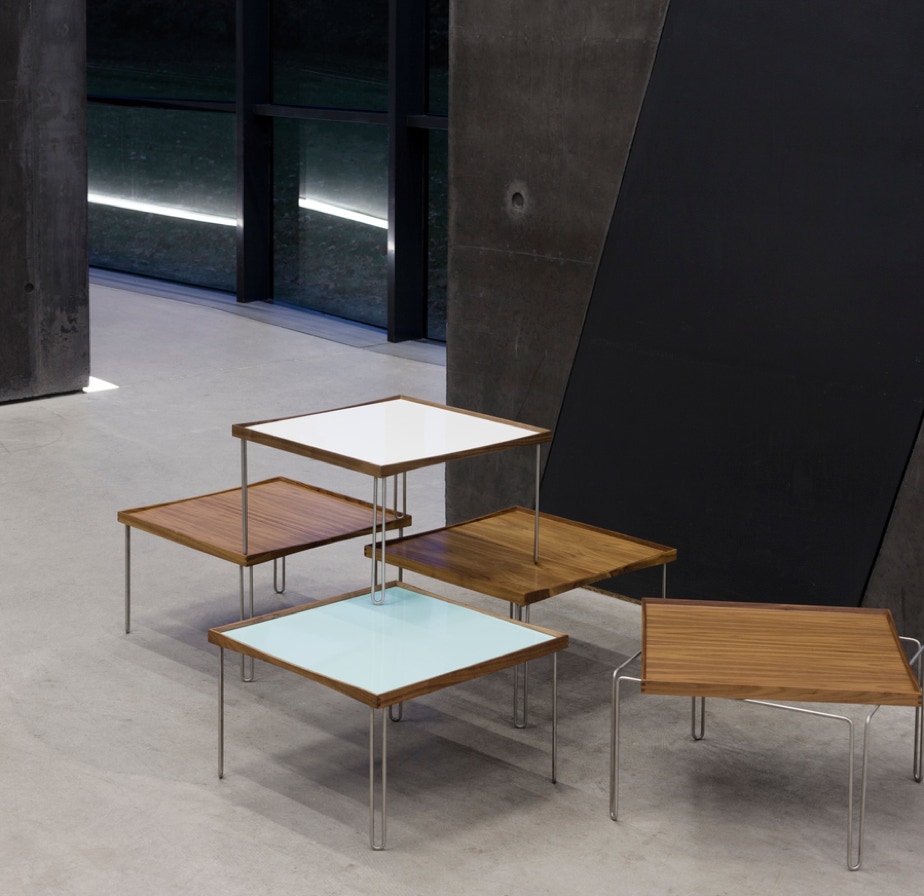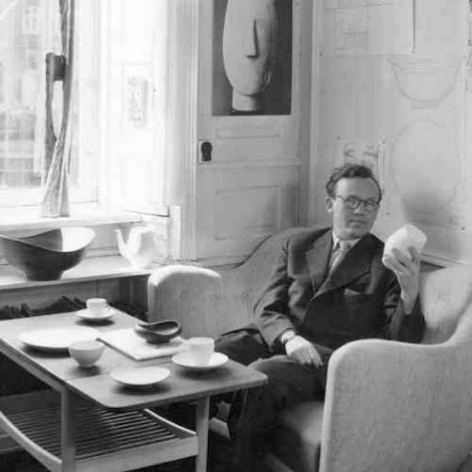
The Tray table, designed by Finn Juhl in 1965, is an evolution of his famous turntables, which are now manufactured by Architectmade. In addition, the top can be turned and the glossy laminate version is offered with one side white and the other side black, light blue or light green.
The Tray table has a sleek, slim frame made of brushed stainless steel, equipped with a table top. The table works equally well on its own or in a group setting. The top is made with thin walnut edges and has a veneer or glossy laminate base.
Materials Walnut edge. Veneer or glossy laminate tabletop in white/black, white/light blue, white/light green. Stainless steel frame.
Dimensions 55 x 55 x H33 cm
Tray Table
from
Free samples
(against deposit)
Finn Juhl

As a teenager, Finn Juhl (1912-1989) wanted to become an art historian after having been fascinated by fine arts since childhood. His father prevented him from doing so and he studied architecture. Later, once his reputation as a furniture designer had been acquired, he would speak of himself as a self-taught man, certainly in reference to this thwarted vocation which forced him to make his intellectual journey alone. His very singular style owes much to this non-linear trajectory, with a very unacademic interpretation of art visible in his work. Finn Juhl began his studies in 1930, a key period that saw the birth of modern design and furniture.
His ultra-modern offices in the center of Copenhagen greeted visitors with a huge Japanese paper fish, a symbol of imagination. And rather than approaching furniture design from a functional, classical perspective, Finn Juhl approached his work as a sculptor. He sought beauty in volume and form, life and expressiveness. An approach that in the 1940's and 1950's was totally unprecedented. For Finn Juhl, it was clear that a piece of furniture could not be limited to a function, but also had to express an artistic sensibility.
While he remains world-famous for his furniture, Finn Juhl also designed several interior architecture projects and a few industrial products, including IBM typewriters. His greatest commercial success was with the Baker Company in the United States, which allowed him to mass-produce several pieces of furniture.
As an architect, he is known for the interior design of the United Nations Council in New York.